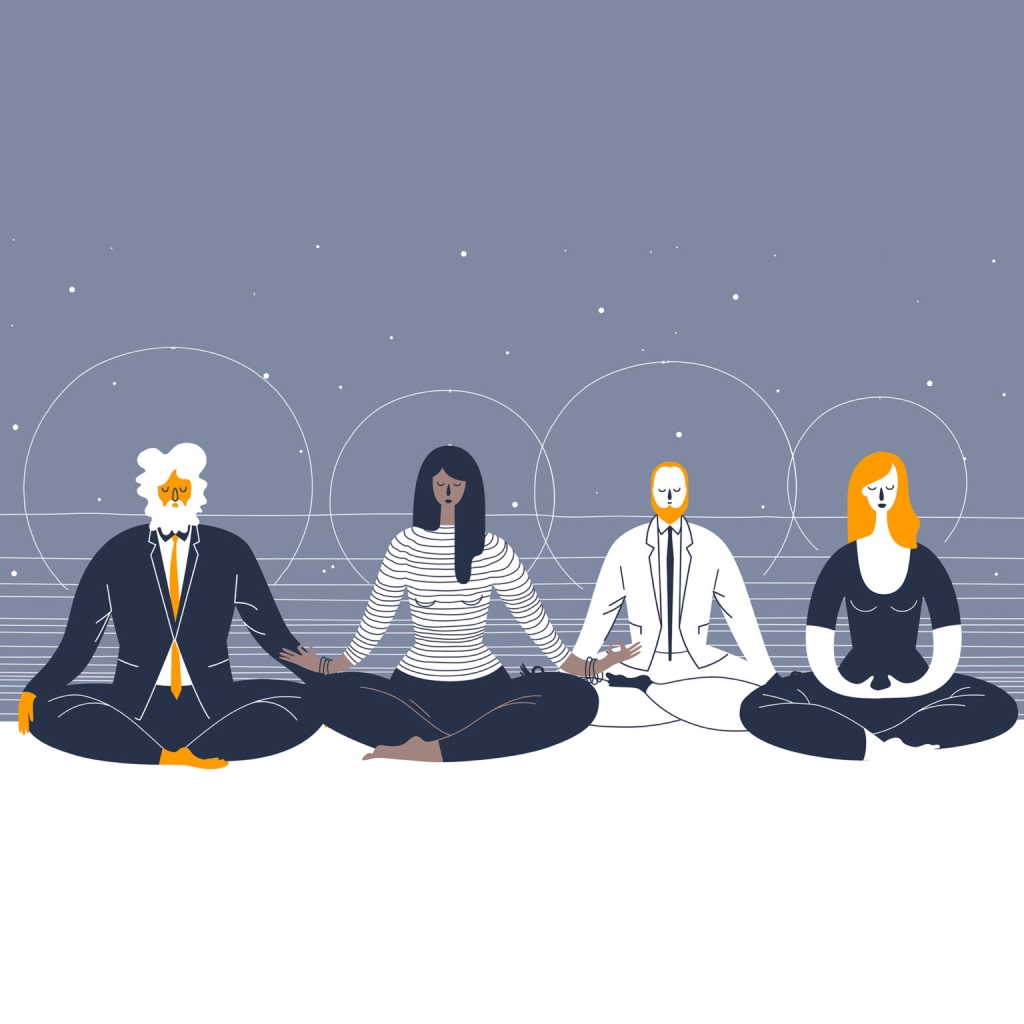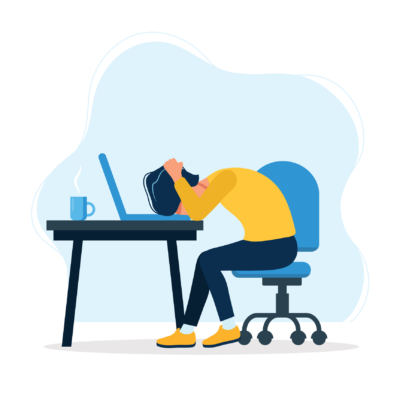James Baraz, author and meditation instructor, said of mindfulness that “it is simply being aware of what is happening right now without wishing it could be otherwise; enjoying the things you like without getting attached to them when things change (which they will); accepting the less pleasant experiences without fearing that they will always be that way (which they won’t).”
In our daily lives, we are all subject to more or less stressful times, which often overwhelm and disrupt our mood and physical health. But there are solutions that, once put into practice, can help us improve our quality of life considerably.
One of these is the mindfulness technique of stress reduction. With its origins in Buddhist philosophy, mindfulness is about bringing your attention into the present moment, eliminating any thoughts of the past or worries about the future. The basic concept of mindfulness practice is the acceptance, without judgment, of the experiences we have. It teaches us to look at our thoughts and emotions for what they are – just thoughts and emotions, without getting attached to them.

In today’s fast-paced society, we are all caught in the trap of multitasking, which has various negative health consequences. Psychologists Susan Orsillo and Lizabeth Roemer outline these problems in their book “Mindfulness for Anxiety: free yourself from chronic worry and get your life back”, including: memory and attention problems, disconnection from work and loved ones, distant relationships, confusion and despair, and increased anxiety levels[1].
By practicing mindfulness, not only can we learn how to be more balanced when we find ourselves in emotionally charged situations, but we also become more receptive to what is happening around us. In this way, we can stay connected to the here and now, focusing our attention on the colors we see around us, the sounds we hear, the temperature of the air, the sensations we feel in our bodies, etc.

It is important to note that this technique is not a substitute for psychotherapy for people with a mental disorder, but rather a complement to it, which has been shown to have remarkable results not only on mental health, but also on physical health. Some of the problems mindfulness has proven to be effective for are: anxiety, heart disease, depression, high blood pressure, addiction, chronic pain, eating disorders, stress reduction, insomnia. [2]
In his book “How the Mind Can Heal the Body”, Dr. David R. Hamilton outlines the many changes that occur through the use of mindfulness, both in people who are struggling with various illnesses and in healthy people. [3] Thus, studies of patients suffering from prostate cancer and early-stage breast cancer, as well as patients with diabetes, have shown that mindfulness has helped to improve their health. The results were as follows: reduced blood pressure, decreased cortisol levels and increased immune cell count in cancer patients [4, 5, 6] and lower blood pressure, lower glycated hemoglobin, reduced anxiety and psychological exhaustion in patients with type II diabetes mellitus. [7]
For people with certain eating disorders, mindfulness can reduce episodes of binge eating by noticing the intensity of the urge to eat without giving in to it. In terms of people battling depression, it has been found that there is a halving of the relapse rate in those who, in addition to cognitive psychotherapy, also use mindfulness practice, as opposed to people who do not include mindfulness in their recovery. [8]
Mindfulness is also beneficial for mentally and physically healthy people, helping them to maintain a good state of mind and reduce stress and anxiety. The more frequent the practice, the better the results. [9]

Following a questionnaire administered by a group of psychologists at the University of Rochester in New York to identify the presence or absence of mindfulness in everyday activities, they offered some useful tips that, once implemented, can help people improve their awareness. To do this, psychologists have recommended using common situations such as receiving a phone call or buckling your seatbelt, and to observe ourselves carefully during these activities. We can also choose an activity that we usually do in a hurry and do it with full awareness. Another very important aspect is to return our attention to our breathing, both in the evening, before going to sleep, and in the morning, when we wake up. By focusing our attention on the simple but impactful process of conscious breathing, we become calmer and more grounded inward rather than outward. [10]
We need to understand that stress is a harmful and energy-consuming factor that affects us in countless ways and that we need to work to fight it. In this direction, we can start by taking better care of ourselves, giving ourselves enough time to rest when our body needs it, and remembering that there is a solution for every problem.
Mindfulness exercise for our thoughts:
- Find a comfortable lying or sitting position. Make sure your spine is straight, your shoulders are relaxed, your jaw is unclenched and you won’t be interrupted during the exercise.
- Close your eyes. Breathe deeply until you reach a high level of relaxation and concentration. Notice how your abdomen rises and descends as you calmly breathe in and out, feeling the warmth as it enters your body.
- Shift your attention from your breath to your thoughts, imagining them taking on a unique shape. Let them pass freely, without interrupting or stopping them in any way. Avoid labeling, judging or analyzing them. Simply observe.
- Stay in the present moment. When you realize that thoughts about the past or concerns about the future are arising in your mind, become aware of this and turn your attention back to the shape of the thoughts that are going in and out of your mind. Remember that they are just thoughts.
- Slowly begin to filter the thoughts that enter your mind, focusing on your breathing, and when you feel ready, open your eyes.
Useful resources in Romanian:
Maria Nicolau: Mindfulness for beginners:
https://www.youtube.com/watch?v=8ABka_S6GKg
Maria Nicolau: All about mindfulness- How it can change your life :
https://www.youtube.com/watch?v=yncyqhpUfKQ&t=24s
Dr. Hedi Hodka, Health and Science Collection:
https://www.youtube.com/watch?v=4rgdFiHu8Ao
Simona- EDEN TERRA:
https://www.youtube.com/watch?v=8KGGZ26kjhs
.
.
Resources in English:
TEDxTalks :
https://www.youtube.com/watch?v=IeblJdB2-Vo
Podcasts:
http://ishouldbemeditating.com/category/podcast
https://www.podbean.com/podcast-detail/mpd6w-2f104/Meditation-Station-by-Stin-Hansen-Podcast
https://podcasts.apple.com/us/podcast/onemind-podcast-morgan-dix/id975006871
Apps:
Smiling Mind: https://www.smilingmind.com.au/
Stop, Breathe and Think: https://www.stopbreathethink.com/
Books :
Dr. David R. Hamilton – How the mind can heal the body
Bret A. Moore – How to control your anxiety. Make the best of worry, stress and fear
.
.
Bibliography:
- Orsillo,S.M., & Roamer, A.(2011). The Mindful Way through Anxiety: Break Free from Chronic Worry and Reclaim Your Life. New York: The Guilford Press, 1st edition.
- Dr. Moore B.A. (2014): Taking control over anxiety: Small Steps for Getting the best of Worry, Stress and Fear. U.S: American Psychological Association(APA).
- Dr. Hamilton, R.H. (2008): How your mind can heal your body. UK: Hay House UK Ltd.
- L.E.Carlson, M.Speca, P.Faris, K.D.Patel, (2007): Brain, Behaviour and Immunity, 21(8), 1.038-1.049
- L.E.Carlson, M.Speca, K.D.Patel, E.Goodey, (2004): Pyschoneuroendocrinology,, 29(4), 448-474
- M.Speca, L.E.Carlson, E.Goodey, M.Angel,(2000): Psychosomatic Medicine, 62(5), 613-622.
- Rosenzweig, S., Reibel, K.D., Greeson, J.M, Edman, J.S., Jasser, S.A., McMearty, K.D, Goldstein, B.J.( 2007): Alternative Therapies in Health and Medicine, 13(5), 36-38.
- Pistorio, M., (2010): La sagesse de nos colères. De la colère qui detruit à la colère qui construit, Canada: Éditions de L’Homme.
- Lane, J.D., Seskevich, J.E., Pieper, C.F. (2007): Alternative Therapies in Health and Medicine, 13(1), 38-44.
- Brown, K.W. & Ryan, R.M. (2003). The benefits of being present: Mindfulness and its role in psychological well-being. Journal of Personality and Social Psychology, 84, 822-848.


